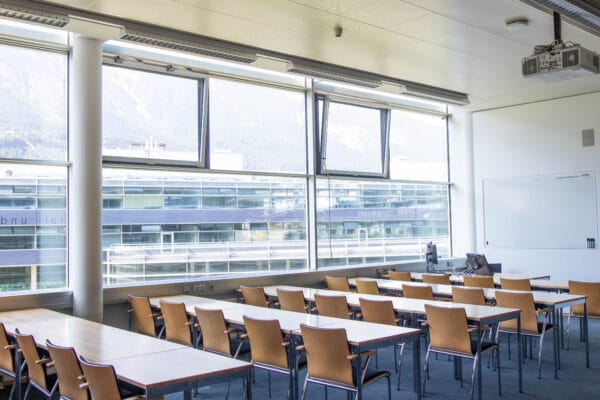
NAME:
MCI - SR 303
BUILDING:
Management Center Innsbruck
FLOOR:
3
TYPE:
Seminar Room
CAPACITY:
54
ACCESS:
Only Participants
EQUIPMENT:
Beamer, Handicapped Accessible, PC, Sound System, Whiteboard, WLAN (Eduroam), Microphones
Climate change is a significant driver of the range-expansion of plant and invertebrate species. Although such range-expansions are also mediated by plant-animal interactions, range-expanding species can have an impact on existing plant-animal interactions in the newly occupied area. However, in montane regions, many of the baseline data required to measure the impacts of climate change and range-expanding species on the ecosystem are lacking, usually due to logistical difficulties of accessing these regions for long-term monitoring. As such, we are unable to accurately predict and mitigate the effects of range-expanding species on the ecosystem and wider biodiversity. The development of wildlife camera technology has allowed for constant remote monitoring of the environment, providing us with new information, at both temporal and spatial scales, on animal abundance, plant phenology and plant-animal interactions. Recently, advancements in deep learning machine models have enabled rapid processing of these camera trap images, providing access to data at an unprecedented rate. The globally collaborative “RangeX” project, replicated in five countries, aimed to better understand the processes and impacts of range-expanding plants following climate warming in montane environments. The South African RangeX component was situated in the relatively unexplored northern Maloti-Drakensberg. Twenty-five time-lapse wildlife cameras were deployed at two sites spanning a large elevational gradient, set to take photographs every five minutes for the duration of the three-year project. We reflect and report on three years of long-term remote camera trap monitoring of animal diversity and plant-animal interactions within an alpine context, focusing on visitor/pollinator timing and pollinator-pollinator interactions within the Maloti-Drakensberg, as well as plant phenology. We demonstrate how camera trap image by-catch can provide meteorological data at fine temporal and spatial scales, where ensemble deep learning models were trained to identify conditions as overcast, sunshine, hail or snow in camera trap images from three RangeX sites, and the resultant model was able to rapidly classify these conditions on unseen images with a 91-96% accuracy. Ultimately, we showcase how technological advancements can provide valuable ecological data for regions where such data were previously unavailable.
